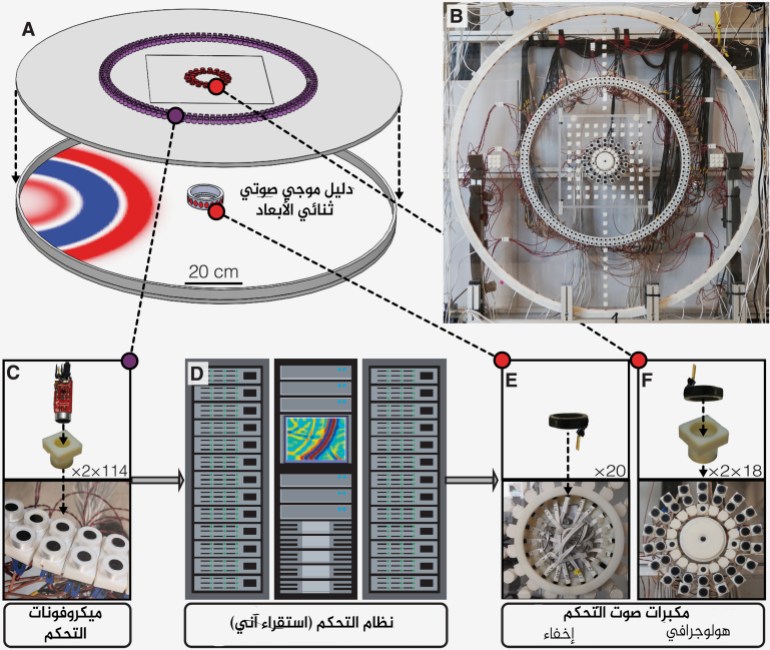Sound waves don't always reach our ears directly, they sometimes bounce off objects and walls where we are, causing them to reflect back to their starting point, so listening to a band playing in a cathedral is a different experience than in a small club.
However, in some applications it may be necessary to “hide” the effect of objects on sound waves, and this idea has been previously tried with so-called metamaterials, which are designed to absorb all sound waves when they reach the surface, however this is a passive and impractical approach, and works only through Limited range of frequencies.
New technology to hide objects
Currently, scientists have developed a new technique for acoustically masking objects, which uses an outer ring of microphones (used to be acoustic sensors) and an inner ring of loudspeakers (used to be sound sources), and by analyzing the sound waves picked up by the microphones, a computer directs the speakers to adjust the field The vocal is instantly so that it behaves as if the object weren't there.
“This discovery opens up previously inaccessible research directions and facilitates practical applications including architectural audio, education and technology,” the researchers explain in the paper, published in Science Advances on September 10. invisibility."
Hiding objects while holographic imaging produces sound illusions (Robertson et al., Science Advances)
The Science Alert website states - in a report published on September 14th - that the idea of masking the effect of objects acoustically is not new in itself, and that with this new "real-time" approach, there is a lot of variety in making the effect of objects sound. It disappears, and it can also work in reverse, to make it appear as if a non-existent object is taking up space in the room (holographic).
Whereas, so-called Programmable Logic Gates Arrays (FPGAs) - embedded circuits that can be encoded as needed - ensure that the audio source outputs are able to respond to the amplifier's output without any delay.
Newer technologies and broader applications
So far, the researchers have been able to operate their system for 2D objects up to 12cm in size, and with further study the team expects to be able to extend the techniques to work with 3D objects that can be much larger in size. over a wide frequency range.
"Our technology allows us to manipulate the sound field over a frequency range of over 3 and a half octaves," geophysicist Johann Robertson of the Swiss Federal Institute of Technology Zurich (ETH Zurich) says in a statement posted on the institute's website.
Diagram showing the installation of a cloaking device and vocal illusions (Science Advances, 2021)
The technology can be used well in any field where sound waves are recorded and analyzed, covering a full range of scientific applications, such as studying infrastructure.
Moreover, the researchers hope to have a system like this that works underwater as well, where acoustics vary greatly - again - any kind of sound wave scanning can be made useful where existing objects need to be hidden or virtual objects placed.
This new research is further evidence of the amazing patience of many scientists as well, as the initial basis for the acoustic mantle was developed many years ago, explains computational geologist Andrew Curtis of the University of Edinburgh in the UK.
"This collaboration began 15 years ago when the basic theory was developed, which explains the long-term nature of science projects," Curtis adds.

